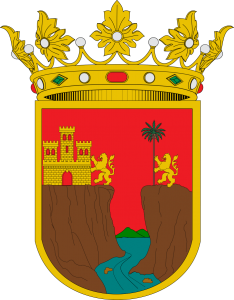- Some initial thoughts on Chiapas, Mexico
- Cañón del Sumidero, Chiapa de Corzo, and San Cristóbal de las Casas, Chiapas, Mexico
- Zinacantán and Chamula, Chiapas, Mexico
- Walking around San Cristóbal de las Casas, Chiapas, Mexico
- The road to Palenque, Chiapas, Mexico
- Bonampak and Yaxchilan, Chiapas, Mexico
- Villahermosa, Tabasco, Mexico

After a long wait in Mexico City, we finally flew down to Chiapas – the southernmost state in Mexico (bordering on Guatemala). We have really been anxious to come to Chiapas as it is blends some of the most amazing natural beauty with the many cultures and ruins from the Mayan civilization. Many of you may be saying “where have I heard the name Chiapas before?” You are probably thinking of the 1994 Zapatista Rebellion that was focused on getting the indigenous population more rights and support from the Mexican government. Amazingly, nearly 2/3 of their demands were met – probably a higher percentage than we experience with our own government. While the Zapatistas are still active, today they are more a political force than any type of revolutionary group, although they are very successful in pressuring the government to do things for them by leveraging the connections that they have with the several European NGOs that support them here. Having said that, there is still a significant army and federal police presence here to make sure that it stays that way.
Having now spent some 24+ hours here, I have learned some things and gotten some initial impressions:
- Chiapas is the poorest state in Mexico. It also has the largest indigenous population (nearly 40%). A coincidence? I don’t think so. Having said that, it begs the question of what constitutes “poor.” The local people do not enjoy much wealth, but they are in many ways in better shape (e.g., food, culture, access to health care) than the people of Michoacan, who have a higher per capita income.
- Mayan culture is still very much in evidence here, but it is anything but singular/unified. There are many (around 10-12) groups of Mayan people in Chiapas and northern Guatemala with very different dialects, dress, and cultural mores. Much of that has to do with the geographic and physical distances between the groups. While they generally get along well together, there have been some serious incidents between the communities
- Chiapas has the greatest biological diversity in North America. It’s interesting to note that Mexico represents over 10% of the biodiversity in the world and tiny Chiapas represents over 20% of the biodiversity in Mexico. We have already seen an amazing number of animal and plant species and we are just breaking the surface.
- The capital city is Tuxtla Guitierrez which is a large, somewhat unattractive city where much of the wealth is centered. It’s only been the capital since 1892 (before that it was San Cristobal). The change was due to the transportation distance from Mexico City as well as the fact that when San Cristobal was the capital, Chiapas was actually part of Guatemala and was somewhat reluctant to accept the change to Mexico. We spent our first night there and were pretty unimpressed. What it has in wealth it lacks in culture
Anyway, that is probably enough for an intro. From Tuxtla Guiterrrez, we have set off to the Cañón del Sumidero, Chiapa de Corzo, and San Cristóbal de las Casas.
This entry was posted in Chiapas, Mexico, Travel

